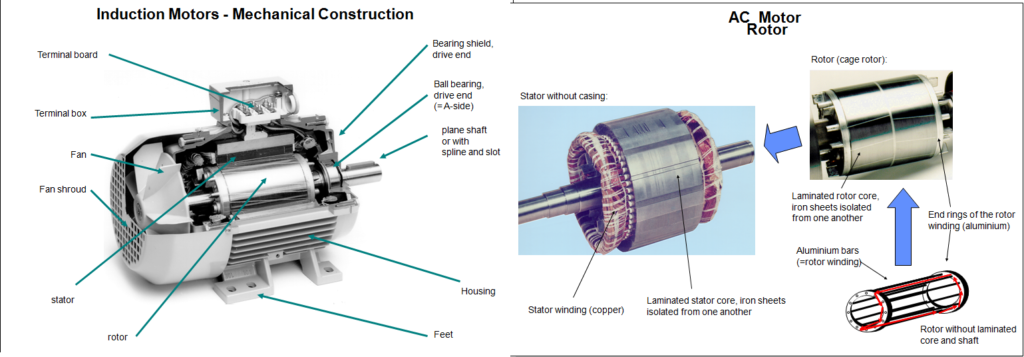Your cart is currently empty!
How Does an Electric Car Motor Work? A Comprehensive Guide
Introduction:
Electric vehicles (EVs) are gaining popularity worldwide due to their environmental friendliness and efficiency. Central to their operation is the electric motor, a sophisticated yet efficient piece of technology. This article explains how electric car motors work and why they are the key to a sustainable transportation future.
What is an Electric Car Motor?
An electric car motor is a device that converts electrical energy from the battery into mechanical energy to propel the vehicle. Unlike internal combustion engines (ICEs), which rely on burning fuel, electric motors operate through electromagnetic principles, making them more efficient and environmentally friendly.
Components of an Electric Car Motor:

- Stator: The stationary part of the motor that houses the windings.
- Rotor: The rotating part of the motor that contains magnets or windings.
- Commutator: A device that reverses the direction of the current in the rotor windings, causing continuous rotation.
- Windings: Coiled wires within the stator that carry current.
- Magnets: Used in some motors to create a magnetic field.
- Controller: Manages the power flow from the battery to the motor.
- Inverter: An electronic device that converts direct current (DC) from the battery to alternating current (AC) to power the motor
How Does an Electric Motor Work?
DC Motors:
The simplest form of DC motor consists of a stationary magnetic field and a conductor coil connected to a split ring commutator, which is connected to a DC power supply via brushes. The diagram below shows this type of motor in a starting position.

Diagram showing components of a very simple DC motor, and how these create a rotational force around the motor axis
A DC motor works by applying a voltage to the brushes, which passes the voltage to the coil through the split ring commutator. The current-carrying coil is in a magnetic field, which produces a rotational force on the coil. The split ring commutator is used to switch the current direction in the coil at the same rate as the motor rotates. To increase the power of a DC motor, the strength of the magnetic field can be increased, more turns can be added to the coil, or a higher current can be used in the coil. A more advanced type of DC motor is the brushless motor, which uses a semiconductor controller to vary the DC supply voltage polarity. This provides better performance and improved reliability, as the brushes in brushed motors often wear out and need to be replaced.
AC Motors:
AC motors work using a similar principle to DC motors, but with several key differences. Generally, the coil windings form the stator (stationary part) of the motor, while the rotor is a permanent magnet or electromagnet. In an AC motor, an alternating current (AC) is applied to the stator coil windings, creating a varying magnetic field. This varying magnetic field is used to produce a rotational force on the rotor, spinning the motor. The split-ring commutator is no longer needed, since the current direction is reversed by the AC supply.
The AC motor works on the principle of electromagnetic induction. When an alternating current is applied to the stator windings, the varying magnetic field created by the current induces a voltage in the rotor windings. This voltage then produces a current in the rotor windings, creating a magnetic field that interacts with the stator field to produce a torque that rotates the rotor.
The AC motor also has several advantages over DC motors. For example, AC motors are more efficient and can produce more power than DC motors. Additionally, AC motors can be used in applications where the speed of the motor needs to be controlled, such as in electric vehicles.

Sinusoidal variation of voltage in an AC power supply. (Bottom) – Corresponding magnetic field strength & direction produced by an electromagnet with an AC voltage applied
Electric car motors have revolutionized the automotive industry, offering a sustainable and efficient alternative to traditional gasoline-powered vehicles. By understanding the fundamental principles behind their operation, we can appreciate the engineering marvel that powers these vehicles.

